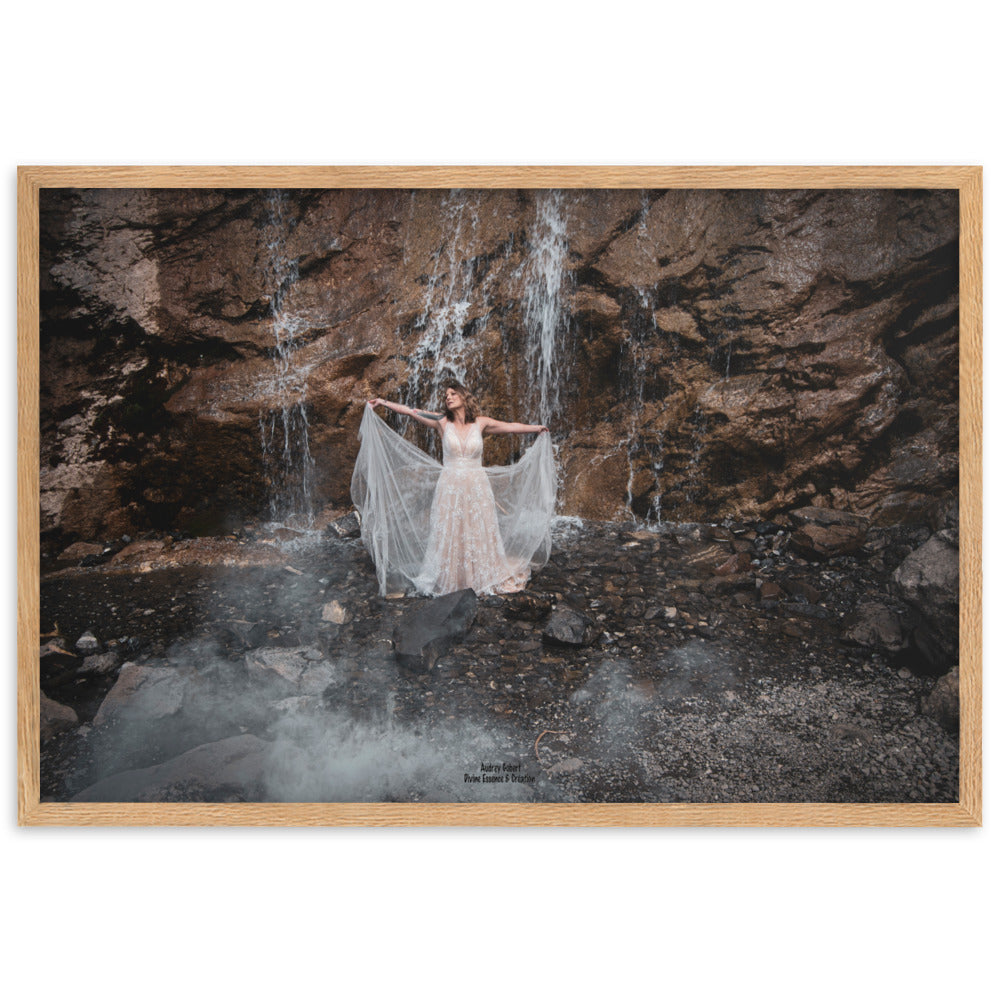Photography is an art that has marked the history of humanity since its invention in the 19th century. She knew how to capture unforgettable moments, intense emotions and poignant stories. This art has undergone constant evolution over the centuries, with major technological advances and big names who have marked the history of photography. Today, photography is omnipresent in our daily lives and continues to be a means of expression and emotion for artists and enthusiasts. Photography forums have become a space for exchange and sharing for amateurs and professionals, where everyone can find inspiration, advice and constructive criticism.
The invention of photography: A look back at the work of Nicéphore Niépce
The invention of photography is a crucial step in the history of art and technology. It has allowed future generations to capture precious moments and document the evolution of the world around them. Among the great names who have marked the history of photography, Nicéphore Niépce is considered the inventor of this revolutionary technique. Thanks to his work, he succeeded in fixing images on tin plates covered with a photosensitive substance. However, his process required a very long exposure time, making it difficult to capture moving or outdoor images. Despite this, Niépce continued to work on his technique until his death in 1833. His work was continued by his collaborator Louis Daguerre, who eventually developed the daguerreotype process, which was much faster and more efficient than Niépce's. Nevertheless, Niépce's legacy remains important because without him, photography as we know it today might never have seen the light of day. The work of Nicéphore Niépce marked a turning point in the history of photography by opening the way to numerous other inventions and technical innovations. Today, his contributions are recognized as having helped shape our worldview and our understanding of the history of photography.
The great names in photography who left their mark on history
Among the great names in photography who have left their mark on history, we cannot miss Ansel Adams. This American photographer was able to capture the raw beauty of natural landscapes with unparalleled technical mastery. His black and white photographs of Yosemite and the Sierra Nevada are works of art in their own right, witnesses to the majesty of nature and man's capacity to enhance it. Dorothea Lange is also a major figure in photography, particularly for her documentary work during the Great Depression in the United States. His poignant portraits of the working poor have become symbols of this dark period in American history. In Europe, Henri Cartier-Bresson is considered the father of photojournalism. He was able to capture decisive moments in History, such as the liberation of Paris or the coronation of the King of England. But his photographs are not only historical testimonies, they are also timeless works of art, testifying to a unique vision of the world. Finally, it is impossible to talk about the great names in photography without mentioning Robert Capa, famous for his photographs taken on battlefields. His striking images of the Normandy landings and the Spanish Civil War have left their mark on history and bear witness to the courage and dedication of photojournalists who risk their lives to give us a glimpse of the world as it really is.
The evolution of photographic techniques over the centuries
Since its invention in the 19th century, photography has undergone numerous technical developments that have pushed the boundaries of art and science. Over the centuries, photographers have experimented with new processes to improve image quality, exposure speed, and even sensitivity to light. Thus, early cameras were often bulky and impractical, with exposure times of up to several hours. But with the advent of film and flash, photography became more accessible and faster, allowing photographers to explore new visual territories.
During the 20th century, technological progress was dazzling: the appearance of digital cameras, the development of variable focal length lenses, and improvements in the resolution and quality of images. These innovations have allowed photographers to free themselves from material constraints to concentrate on the very essence of their art: capturing the present moment, freezing a moment of emotion, capturing a unique atmosphere.
Today, photographic techniques are constantly evolving: augmented reality, drones, 3D printing... The possibilities are endless and open up new creative perspectives for artists and enthusiasts. However, despite these technological advances, some nostalgic people continue to prefer traditional techniques such as silver printing or wet collodion. Whatever the case, the evolution of photographic techniques testifies above all to the richness and diversity of this constantly changing art.
The role of photography in contemporary art
Photography has acquired an important place in contemporary art, where it has become a privileged means of expression for artists. It allows us to capture fleeting moments, tell stories, document events and reflect reality in a subjective way. Contemporary photographs are often used to explore social and political themes, to speak out against injustices, and to give a voice to marginalized people. Artists also use photography to create poetic, abstract or surreal images, which invite the viewer to deeper reflection.
Photography has also influenced other art forms, such as painting, sculpture and installation. Many artists have integrated photographs into their works, creating visual hybrids that challenge traditional boundaries between different mediums. Photography has also played an important role in the evolution of digital art, where it is often used as a starting point for visual experiments.
Ultimately, the role of photography in contemporary art is multiple and complex. It is at the same time a documentary tool, a means of artistic expression and a catalyst for technical innovation. It allows artists to tell stories, explore ideas and convey emotions with an evocative power that continues to influence our perception of the world.
Photography as a means of expression and emotion
Photography is a powerful means of expression and emotion. It allows you to capture a specific moment in time and share it with others. Photography can express a range of emotions from joy to sadness, from fear to hope. It can capture the essence of a moment, a person or a place, and convey deep feelings to viewers. Photographs can also be used to tell a story or to document an important event. Photographers have the ability to capture images that evoke memories and emotions in viewers.
As a medium of expression, photography allows artists to communicate their ideas and feelings to the world. Photographs can be used to raise awareness of important social or environmental issues, or to explore more personal themes such as love, loss or loneliness. Photographers can also use creative techniques such as composition, lighting and focusing to create images that are both beautiful and evocative.
Ultimately, photography is an incredibly powerful way to communicate emotions and ideas. It allows people to see the world through the eyes of the photographer and feel the same emotions as them. As an art form, it is capable of evoking deep emotional responses in viewers and creating lasting memories that can be cherished for years to come.
How photography changed our perception of the world
Photography has changed our perception of the world in significant ways. It made it possible to capture unique moments and preserve them for eternity. It has given us the opportunity to see the world from different angles and perspectives, which has helped us better understand our environment and the people around us. Photography has also allowed us to explore unfamiliar cultures and landscapes, opening our eyes to realities we might never have known otherwise.
However, photography can also mislead our perception of reality. Images can be manipulated and retouched to create a false impression of reality. The media often uses shocking images to influence public opinion and stir up emotions, sometimes to the detriment of the truth.
Despite this, photography remains a powerful tool for documenting our ever-changing world. Photographers are able to capture moments of intense emotion and convey their personal vision of the world. Images can inspire, educate and raise awareness about important issues such as climate change, human rights or armed conflict.
Ultimately, photography has profoundly changed our perception of the world by allowing us to see beauty in imperfection, feel emotion in the present moment, and appreciate the cultural differences that make our world so rich and diversified.
Photography forums: a space for exchange and sharing for enthusiasts
Photography forums are virtual spaces where enthusiasts can exchange knowledge, share experiences and discuss their common passion. They allow amateur and professional photographers to interact and help each other in a dynamic and open community. The forums also offer the opportunity to discover new techniques, learn new concepts and broaden your photography horizons.
These online platforms also allow members to connect with like-minded people around the world, which is especially great for photographers looking to explore different cultures or artistic styles. Forums are a great place to find constructive criticism and feedback on one's work, as well as to share projects and ideas.
Photography forums also have a positive impact on photographers' motivation, as they give them the opportunity to connect with other enthusiasts who share their enthusiasm for the discipline. This can help overcome periods of creative block and maintain high levels of inspiration.
In short, photography forums are a valuable resource for all photography enthusiasts and professionals. They offer a community for exchange and sharing, allow you to discover new techniques and trends, and are an excellent way to explore different artistic styles.
Photography is much more than just a means of capturing images. It is a form of expression, a communication tool and a source of emotion. Over the centuries, it has evolved to become an art in its own right, influencing our perception of the world around us. Photography forums are a space for exchange and sharing for enthusiasts, allowing them to discover new horizons and share experiences. It is fascinating to see how this invention has changed the way we communicate and interact with the world. We are curious to see how photography will continue to evolve in the years to come and how it will affect our daily lives. What will be the next big innovation in this field? Which new artists will emerge? Will photography continue to play an important role in contemporary art? These questions remain open for reflection and discussion.





































































Leave a comment
All comments are moderated before being published.
This site is protected by hCaptcha and the hCaptcha Privacy Policy and Terms of Service apply.